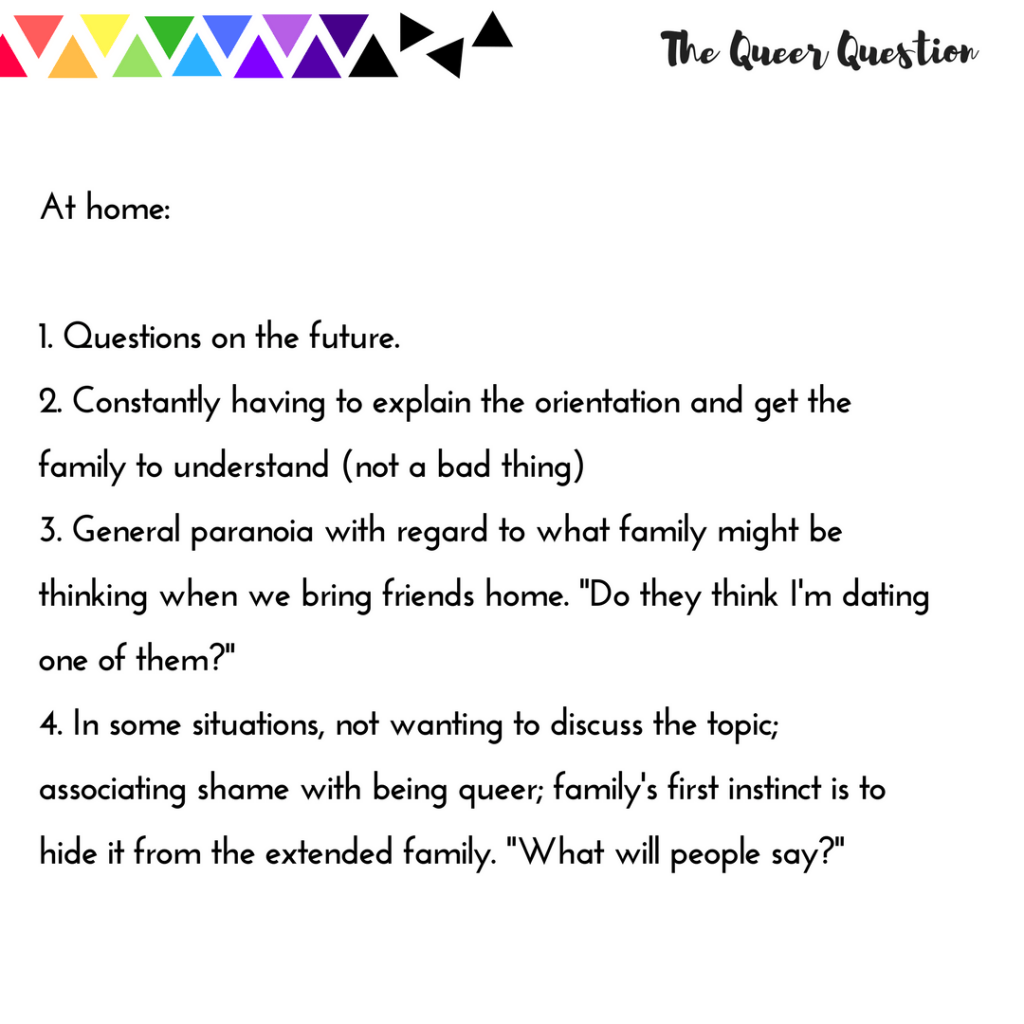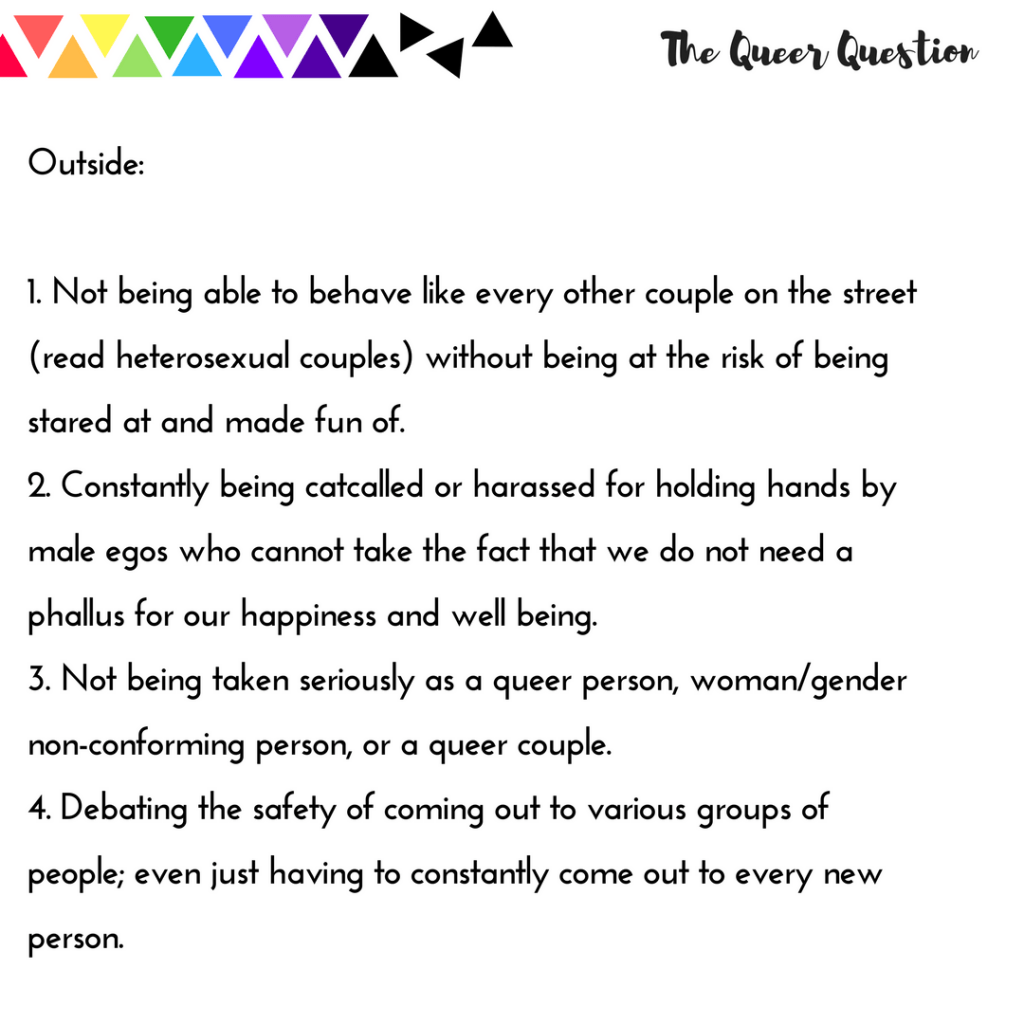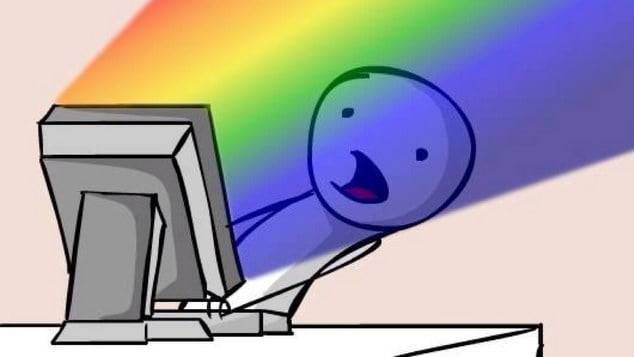Posted by April and May
The Queer Question is an ever-growing experimental project that we, a gay female couple created in mid-2017. We refer to ourselves as April and May on the page while we answer questions and we will be doing so through this article as well.
It started off as a simple idea in a rickshaw on a very hot afternoon in Mumbai: “Why isn’t there a place where people can ask questions about being queer?” The need for this platform, we believe, is to provide everyone a safe space to ask questions and educate themselves. We believe that creating awareness and spreading education is one of the key ways to cut down homophobia. People often fear and are bitter towards what is different from them. It is mostly because of the lack of information. And often, a space of conflict gets created when someone asks a question to a queer person that the queer person finds offensive and then the questions seem to stop.
 And so, by the end of the day, April had a Facebook page up and running, along with a Google Form where people could ask questions. It’s a very simple form, where one can anonymously ask questions. We try and answer the questions to the best of our knowledge. A lot of research goes into the especially factual ones. The answers are posted on our Facebook page and Instagram account.
And so, by the end of the day, April had a Facebook page up and running, along with a Google Form where people could ask questions. It’s a very simple form, where one can anonymously ask questions. We try and answer the questions to the best of our knowledge. A lot of research goes into the especially factual ones. The answers are posted on our Facebook page and Instagram account.
We’ve had many types of questions, and such interesting ones too; many which got us thinking in new directions; some were funny; some just very nice messages. But what followed soon was a secondary outcome: young queer people from around India writing to us. We didn’t expect this at all. But it was so important, because we knew the importance of finding a relevant source/body to find solace in; to know that one is not alone, that being queer is okay; we had been there too.
One of the biggest misconceptions and often annoying stereotype that we wanted to address is that lesbianism exists for the male gaze. We’re certain that just like us, many queer women (couples or not) have been at the receiving end of being invited to have threesomes. Many are assumed to be promiscuous. The existence of lesbian women is seen as solely for the pleasure of cis-gender straight men.
 The age from 12-18 is a time of role confusion and an exploration of identity for most people and that’s also the time when we find our hormones raging and constantly looking for more information about how our body works and what it can and cannot do. In this time of need, often the only resource available to most of us was porn. And, like most other teenagers we watched porn too. And every time we watched porn with two women in it, there was a man looking at them as well. Sometimes instructing them to be doing what they wanted to do to each other. The male gaze that followed their every move.
The age from 12-18 is a time of role confusion and an exploration of identity for most people and that’s also the time when we find our hormones raging and constantly looking for more information about how our body works and what it can and cannot do. In this time of need, often the only resource available to most of us was porn. And, like most other teenagers we watched porn too. And every time we watched porn with two women in it, there was a man looking at them as well. Sometimes instructing them to be doing what they wanted to do to each other. The male gaze that followed their every move.
The need for this platform is to provide everyone a safe space to ask questions and educate themselves.
Years later, most of us go through the same thing. In real life. Being asked by random people on Tinder for threesomes because your profile says interested in women. A lot of ‘lesbian porn’ is not ‘authentically’ lesbian and is made for the male gaze. You often see that the women are conventionally ‘feminine’ and ‘pretty’.
The male gaze seems to be a very big problem just for women in general too. Women have always been treated as though they exist for a man and his pleasure. And when you put two women together as a couple, they aren’t taken seriously. This hits close to home as we’ve experienced this first-hand.
When we first started seeing each other, there was a time when we were at a food truck with a male friend of ours. He had gone to check on the status of our food. April and I were standing pretty intimately. In a few minutes, a (visibly
intoxicated)man (with his group of friends behind him) approached April and started commenting on how he liked her eyes and lips, etc. She humoured his advances by politely listening to him; it seemed like the smarter thing to do, since it could have been unsafe to piss off a group of drunk men. After all his nonsense, April very straightforwardly told him that she did not like men, that she liked women, and gave me a kiss on the cheek. The man simply nodded and said “Well, that’s because you don’t know what a man can do and a woman can’t.”

We got ourselves out of that situation as soon as possible. But it is so unfortunate that people have to go through this. There were three major lessons we took away from this. One, that two women together are not taken as seriously as two men are or a man and woman are and second, that men automatically assume that all gay females have never been with a man before. Third, if April had a boy next to her and she told the other guy that she wasn’t interested, he would have backed off. That brings us back to the fact that women in a relationship with each other are not taken as seriously.
In reality, gay women are just like anybody else. Their sexual orientation does not tend to always affect other aspects of their lives. And if it does, it happens to be a personal choice more than an invariable event that occurs. It is important to remember that it is a subjective and cultural thing.
A gay woman in the USA isn’t the same as a gay woman in India. In the USA, gay women have created a different non-binary culture because they can, they have more access to resources and spaces to develop that part of their identity. While in India, we have a more restricting culture that draws more definite lines. Relatively, the situation in India is not the same in India.
Women have always been treated as though they exist for a man and his pleasure.
This is the same reason that a lot of us (in India) faced a lack of resources and went through a phase of confusion with regard to our identity in our teen years. We were hugely exposed to queer culture coming only from the USA or the UK; YouTubers coming out, TV shows that were inclusive, films dealing with being queer and the queer rights movement, etc. We’re so grateful for all this, but the subjectivity of the matter didn’t let us do the same things that they could. It starts as simple as at home, for example, Indian parents are so culturally different, and therefore, very different to deal with.
Most queer people are closeted in India, and the main reason seems to be safety. We have to be picky about when and where we can be completely open with our identity. Anonymity is sometimes the only answer for saving us from harm’s way, unfortunately. Hatred makes people do bad things. We constantly have to gamble and figure out if people are going to react unpleasantly. We’re lucky if people take us (and our relationship) as seriously as they would with cis-gendered straight people. Other than safety, staying in the closet can be okay if someone is just figuring things out, but we personally feel that it is unfortunate that we have to be in a society where so much shame surrounds sexuality.
With this project, we want to try and improve relevance in our queer community in India, and maybe even try and make it a little bit more accessible for younger people. We want to keep an open space where facts and truth prevail, where education is the key. The point of anonymity is so one can ask without having to feel like they’re being put in the spot. The Queer Question stands to help and educate. And we wish to keep our project open-ended, allowing for any kinds of discoveries or changes that we may face.
Also Read: Navigating The Dating World As Queer Women In India
The Queer Question is a project that April and May started in the hope of dispelling the many myths surrounding the queer community in India. This is the link to their Google Form, where one can safely ask questions anonymously and they can be followed on Facebook and Instagram.
Featured Image Credit: Out in Perth
About the author(s)
Guest Writers are writers who occasionally write on FII.




